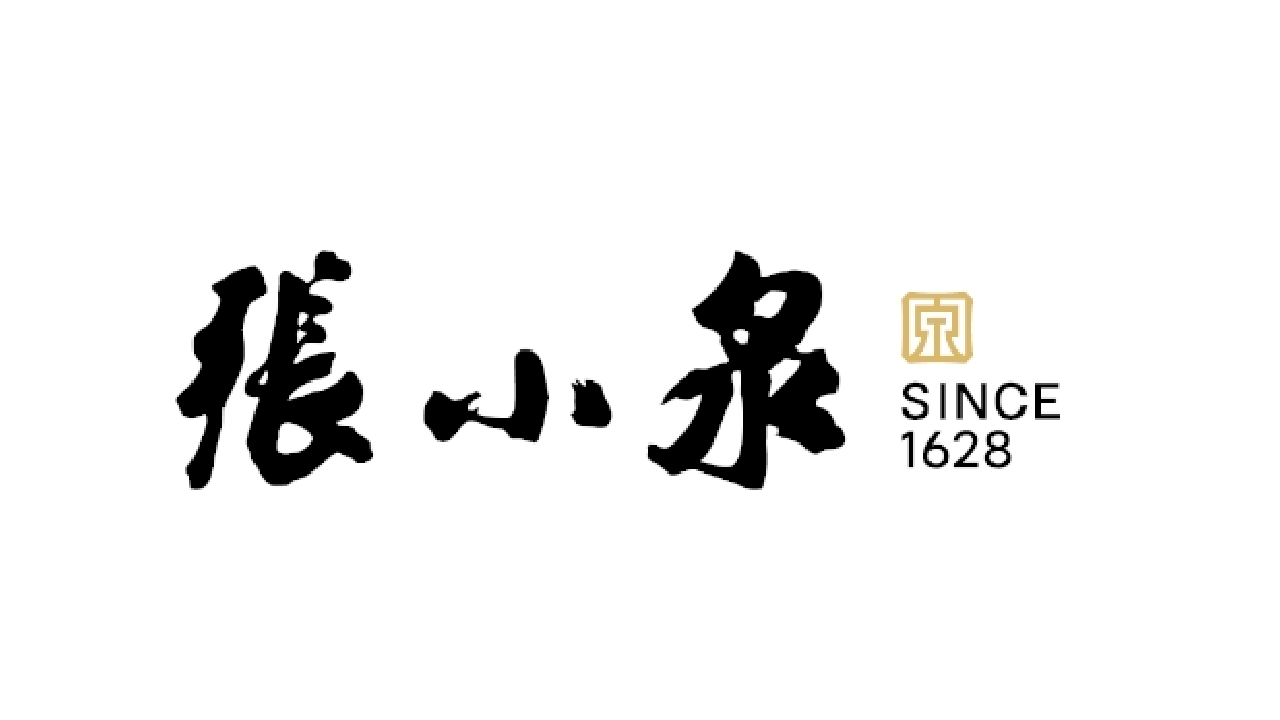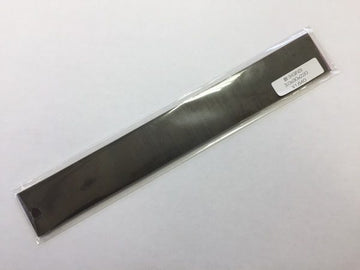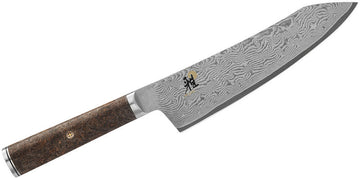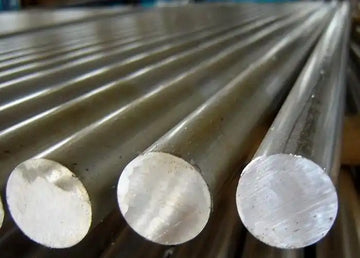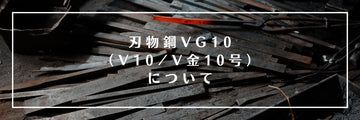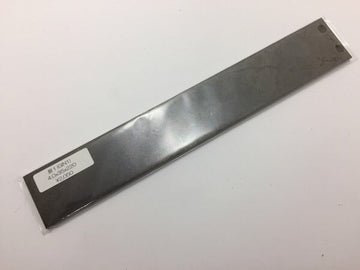Silver Steel #3 (Ginsan #3) represents an innovative approach to Japanese knife steel, offering a remarkable balance between high-performance cutting ability and practical maintenance. Developed by Hitachi Metals, this stainless steel alloy bridges the gap between traditional carbon steels and modern stainless options, making it increasingly popular among both professional chefs and serious home cooks who want excellent cutting performance without demanding maintenance routines.

What Silver Steel #3 Is Made Of
Silver Steel #3 features a carefully balanced composition that prioritizes both hardness and corrosion resistance:
- Carbon: 0.95-1.10% - High enough to provide excellent hardness and edge stability
- Chromium: 13-14.5% - Sufficient to ensure strong rust resistance (stainless steel requires at least 10.5% chromium)
- Manganese: 0.6-1.0% - Enhances hardenability and strengthens the steel matrix
- Silicon: ≤0.35% - Contributes to overall strength and deoxidation during manufacturing
What makes Silver Steel #3 distinctive is what it doesn't contain - unlike many premium stainless steels, it omits molybdenum, vanadium, and tungsten. This simpler composition creates a fine-grained martensitic structure that balances excellent edge characteristics with substantially improved corrosion resistance compared to carbon steels.
How Silver Steel #3 Performs In The Kitchen Knives
Hardness And Toughness
Silver Steel #3 achieves a hardness of 59-62 HRC on the Rockwell scale, putting it in the same range as many high-performance knife steels. This hardness level allows for excellent edge stability while maintaining enough toughness to resist chipping during normal kitchen use.
The steel hits a particularly good balance point where it's hard enough to take and maintain a keen edge but not so hard that it becomes brittle or prone to damage. This makes it more forgiving than harder steels when encountering bones or frozen foods, and when used by those still developing their knife skills.
In professional kitchens where knives might be used by multiple people or for varied tasks, this balance of properties makes Silver Steel #3 especially valuable - it performs at a high level while remaining quite durable.
Sharpness And Edge Retention
Silver Steel #3 takes an impressively sharp edge, comparable to traditional carbon steels like White Steel #2. Knives can be honed to 15-17° angles for exceptional sharpness, enabling precision cuts from delicate fish slicing to fine vegetable work.

For edge retention, Silver Steel #3 maintains about 85% of its sharpness after processing 5 kg of vegetables. This puts it ahead of many mainstream stainless steels while rivaling mid-tier carbon steels - an impressive feat for a steel that also offers excellent corrosion resistance.
When it comes time to sharpen, Silver Steel #3 is notably easier to work with than many high-alloy stainless steels. With minimal complex carbides to interfere with the process, it responds well to standard whetstones, forming a burr quickly and allowing for efficient sharpening sessions. Users report approximately 30% faster burr removal compared to VG-10, making maintenance sessions quicker and more productive.
Corrosion Resistance And Maintenance
This is where Silver Steel #3 truly shines. With 13-14.5% chromium content, it forms a protective chromium oxide layer that provides excellent resistance to rust and corrosion. Unlike carbon steels that must be cleaned and dried immediately after use, Silver Steel #3 can withstand brief exposure to moisture, acidic ingredients, and salt without immediate oxidation.

This corrosion resistance translates to practical benefits in busy kitchens:
- Less urgency for immediate cleaning after cutting acidic foods
- Better tolerance for humid environments
- No need for regular oiling
- Reduced risk of discoloration or oxidation
While proper care still includes hand washing and thorough drying, Silver Steel #3 forgives occasional lapses in maintenance that would quickly damage carbon steel blades.
Applications In Kitchen Knives
Ideal Kitchen Applications
Silver Steel #3's balanced properties make it versatile across various knife styles:
- Gyuto/Chef's Knives: 210-240mm versatile knives for all-purpose cutting tasks, benefiting from the steel's toughness and edge retention
- Yanagiba/Sujihiki: Long slicing knives (240-300mm) for fish preparation, where the steel's ability to take a very fine edge enables clean cuts
- Nakiri/Petty Knives: Thinner profiles for precision vegetable work and detailed tasks
The steel has gained particular popularity in professional sushi environments, with approximately 70% of sushi chefs reportedly embracing it for its ability to deliver carbon-steel-like performance with stainless convenience.
Market Position
Silver Steel #3 knives typically range from $100-$300, positioning them in the mid-to-premium range. While more expensive than entry-level stainless knives, they offer substantially better performance and longevity, with up to 200% longer usable lifespan than lower-grade stainless options.
This price point makes Silver Steel #3 accessible to serious home cooks while providing professional-grade performance, filling an important niche between affordable stainless knives and high-end specialty steels.
Comparison With Other Kitchen Knife Steels
Silver Steel #3 vs. VG-10
Both steels contain similar carbon levels (Silver Steel #3 at 0.95-1.10%, VG-10 at approximately 1%), but VG-10 incorporates additional elements like vanadium, molybdenum, and cobalt. While both achieve similar hardness (59-62 HRC), Silver Steel #3 is noticeably easier to sharpen due to its simpler composition with fewer complex carbides. VG-10 may hold its edge slightly longer in abrasive cutting tasks, but Silver Steel #3 offers better overall balance and user-friendliness for most kitchen applications.
Silver Steel #3 vs. White Steel #1
Silver Steel #3 contains 0.95-1.10% carbon and 13-14.5% chromium with 0.5-0.7% manganese, reaching 59-62 HRC. White Steel #1 has higher carbon (1.25-1.35%) with no chromium and less manganese (0.2-0.4%), reaching 63-65 HRC. White Steel #1 takes a keener edge and sharpens easier, while Silver Steel #3 offers superior corrosion resistance and better chip resistance. Choose White Steel #1 for ultimate cutting performance; choose Silver Steel #3 for excellent performance with lower maintenance.
Silver Steel #3 vs. White Steel #2
White Steel #2 (1.05-1.15% carbon) can achieve slightly higher hardness (60-63 HRC) than Silver Steel #3 and may take a marginally keener edge. However, Silver Steel #3 provides dramatically better corrosion resistance thanks to its 13-14.5% chromium content, compared to White Steel #2's essentially zero corrosion protection. While White Steel #2 remains slightly easier to sharpen, Silver Steel #3 offers about 80% of its cutting performance with vastly improved practicality and significantly reduced maintenance requirements.
Silver Steel #3 vs. White Steel #3
Silver Steel #3 (59-62 HRC) contains 0.95-1.10% carbon with 13-14.5% chromium and 0.5-0.7% manganese. White Steel #3 (58-60 HRC) has lower carbon (0.8-0.9%), no chromium, and 0.2-0.4% manganese. Silver Steel #3 offers much better corrosion resistance and slightly better edge retention, while White Steel #3 is marginally easier to sharpen. Both are forgiving for daily use, but Silver Steel #3 requires far less maintenance.
Silver Steel #3 vs. Blue Steel #1
Silver Steel #3 (0.95-1.10% carbon, 13-14.5% chromium, 0.5-0.7% manganese, 59-62 HRC) offers much better corrosion resistance than Blue Steel #1 (1.25-1.35% carbon, minimal chromium, 0.2-0.4% manganese plus tungsten, 64-65 HRC). Blue Steel #1 provides superior edge retention but is more brittle and requires vigilant maintenance. Silver Steel #3 is easier to maintain, more forgiving, and sufficient for most kitchen tasks.
Silver Steel #3 vs. Blue Steel #2
Blue Steel #2 (1.05-1.15% carbon plus tungsten and chromium) offers approximately 15-20% better edge retention than Silver Steel #3 but requires much more careful maintenance due to its limited corrosion resistance. Silver Steel #3 provides substantially better rust protection, easier sharpening, and greater toughness, making it more practical for daily use. For professional environments where ease of maintenance matters, Silver Steel #3's balance of properties often makes it the more practical choice despite Blue Steel #2's edge retention advantage.
Silver Steel #3 vs. Blue Steel Super
Silver Steel #3 (0.95-1.10% carbon, 13-14.5% chromium, 0.5-0.7% manganese) reaches 59-62 HRC and offers excellent corrosion resistance with good edge retention. Blue Steel Super (1.4-1.5% carbon, minimal chromium, 0.3-0.5% manganese plus tungsten, vanadium, and molybdenum) achieves higher hardness at 64-66 HRC with superior edge retention but requires careful maintenance. Silver Steel #3 provides easier sharpening, better toughness, and much better rust resistance, while Blue Super excels in pure cutting performance. Choose Silver Steel #3 for practical daily use; choose Blue Super for specialized professional applications.
Silver Steel #3 vs. Silver Steel #1
Silver Steel #3 (Ginsan #3) contains 0.95-1.10% carbon, 13-14.5% chromium, and 0.5-0.7% manganese, reaching 59-62 HRC. Silver Steel #1 doesn't exist as a standardized steel in Hitachi's lineup, which only produces Silver Steel #3 (Ginsan #3). Unlike White Steel and Blue Steel that come in #1, #2, and #3 variants, Silver Steel is only manufactured in the #3 grade. When people refer to "Silver Steel #1," they are likely confusing it with another steel type or using improper terminology.
Silver Steel #3 vs. SG2 (R2)
Silver Steel #3 (0.95-1.10% carbon, 13-14.5% chromium, 0.5-0.7% manganese) reaches 59-62 HRC with excellent corrosion resistance. SG2 is a powdered metallurgy steel containing similar chromium but higher carbon and added vanadium, reaching 62-64 HRC. SG2 delivers superior edge retention (about 20-30% better) with similar corrosion resistance but is considerably more difficult to sharpen. Silver Steel #3 responds better to whetstones and is more forgiving against hard surfaces. Choose Silver Steel #3 for balanced performance and easier maintenance; choose SG2 for premium edge-holding in professional settings.
Taking Care Of Silver Steel 3 Knives
Basic Maintenance
While significantly less demanding than carbon steel, Silver Steel 3 still benefits from proper care:
- Hand wash with mild soap and avoid abrasive scouring pads
- Dry after washing to prevent water spotting (though brief moisture exposure won't cause immediate rust)
- Store in a knife block, on a magnetic strip, or in a protective sheath
- No need for regular oiling as with carbon steels
This straightforward maintenance routine helps preserve the knife's performance while requiring much less vigilance than carbon steel options.
Sharpening Recommendations
Silver Steel 3 responds well to standard sharpening practices:
- Begin with medium stones (1000 grit) for edge setting
- Progress to finer stones (3000-6000 grit) for refining
- Maintain consistent angles (typically 15-17° per side for double-bevel knives)
- Burr formation and removal is relatively quick and straightforward
Most users find Silver Steel 3 quite friendly to sharpen, with good feedback during the process and predictable results. While it requires slightly more effort than carbon steels like White Steel, it's significantly easier to work with than highly alloyed stainless steels.
Conclusion
Silver Steel #3 represents a thoughtful compromise in the world of Japanese kitchen knives, offering an exceptional balance between performance and practicality. By combining the high carbon content needed for excellent hardness with sufficient chromium for corrosion resistance, it delivers cutting performance that rivals traditional carbon steels with substantially improved ease of maintenance.
For many chefs and serious home cooks, this balance addresses one of the fundamental dilemmas in knife selection - choosing between cutting performance and practical convenience. Rather than representing a compromise that waters down both sides of the equation, Silver Steel #3 succeeds in capturing approximately 80-90% of carbon steel's cutting performance while eliminating most of its maintenance challenges.
As professional kitchens continue to demand both excellence and efficiency, and as home cooks become more knowledgeable about their tools, Silver Steel #3's balanced approach has earned it a place as one of the most practical high-performance options in the Japanese knife tradition - a steel that respects both the blade's edge and the user's time.
FAQs
What is silver steel3(Ginsan 3)?
Silver Steel #3 (Ginsan 3) is a high-carbon stainless steel developed by Hitachi Metals in Japan. It contains approximately 0.95-1.10% carbon and 13-14.5% chromium, striking an excellent balance between stainless properties and carbon steel performance. It typically reaches hardness of 59-62 HRC and is popular for high-performance Japanese kitchen knives that require good edge retention with less maintenance than carbon steels.
Is silver 3 steel good?
Yes, Silver Steel #3 is excellent for kitchen knives. It offers impressive cutting performance similar to carbon steels while providing stainless properties that resist corrosion. With good edge retention, reasonable ease of sharpening, and resistance to rust, Silver Steel #3 represents a practical "best of both worlds" approach for those who want high performance without meticulous maintenance. Many professional chefs consider it among the best practical stainless steels for serious kitchen use.
What grade is silver steel?
Silver Steel primarily comes in one grade: Silver Steel #3 (Ginsan #3). Unlike White Steel and Blue Steel that have #1, #2, and #3 variants, Hitachi produces Silver Steel only in the #3 grade. The "#3" designation doesn't indicate lower quality—Silver Steel #3 is a premium knife steel that competes favorably with high-end stainless options like VG-10 and AUS-10. It's widely used in quality Japanese kitchen knives from traditional knife makers.
Is Ginsan better than VG-10?
Neither is universally "better"—they have different strengths. Ginsan (Silver Steel #3) is typically easier to sharpen than VG-10 while achieving similar hardness (59-62 HRC vs 60-62 HRC). VG-10 may hold its edge slightly longer due to its vanadium content, but Ginsan develops a finer edge that many professional chefs prefer. Ginsan tends to be more forgiving and less brittle than VG-10. Most knife experts consider them peers with different characteristics rather than one being superior.
What is Ginsan stainless steel?
Ginsan stainless steel (Silver Steel #3) is a Japanese high-carbon stainless steel manufactured by Hitachi Metals containing approximately 0.95-1.10% carbon and 13-14.5% chromium. It combines excellent edge characteristics with good corrosion resistance, achieving 59-62 HRC hardness. It's considered a "simple" high-performance stainless steel that doesn't rely on complex alloying elements like vanadium or molybdenum, making it easier to sharpen while still offering excellent cutting performance.
What is Japanese silver steel?
Japanese Silver Steel (Ginsan) is a high-carbon stainless steel developed by Hitachi Metals that contains approximately 1% carbon and 13-14.5% chromium. The name "Silver Steel" comes from the appearance of the paper used to wrap the raw steel ingots during manufacturing, similar to how White Steel and Blue Steel got their names. It's prized for combining excellent edge characteristics typically associated with carbon steels while providing the corrosion resistance of stainless steel.
Is Ginsan easy to sharpen?
Yes, Ginsan (Silver Steel #3) is relatively easy to sharpen compared to other high-performance stainless steels. Despite its high hardness (59-62 HRC), it responds well to whetstones and forms a burr predictably. It's significantly easier to sharpen than complex alloys like VG-10, ZDP-189, or SG2. While not quite as easy to sharpen as carbon steels like White Steel, most users find Ginsan very user-friendly during sharpening sessions, making it popular among both professionals and home enthusiasts.
What is the composition of ginsan?
Ginsan (Silver Steel #3) contains approximately 0.95-1.10% carbon, 13-14.5% chromium, 0.5-0.7% manganese, and small amounts of silicon (≤0.35%). It notably lacks the vanadium, molybdenum, or cobalt found in more complex stainless steels like VG-10 or SG2. This relatively simple composition focuses on the essential elements needed for a high-performance knife steel, making it easier to heat treat properly and more responsive to sharpening.
What is the difference between ginsan and aus 10?
Ginsan (Silver Steel #3) and AUS-10 are both high-carbon stainless steels with similar carbon content (about 1%) and chromium (13-14.5%), but AUS-10 contains added vanadium that Ginsan lacks. Ginsan typically achieves similar or slightly higher hardness (59-62 HRC vs. AUS-10's 59-60 HRC) and many knife makers find it easier to work with. Ginsan tends to sharpen more easily while AUS-10 may hold its edge slightly longer. Both are excellent knife steels, with Ginsan being more common in traditional Japanese knives.
Is silver 3 steel good for kitchen knives?
Silver Steel #3 is excellent for kitchen knives, offering an ideal balance of properties. It takes a very fine edge similar to carbon steels, maintains that edge well through average kitchen tasks, resists corrosion even when cutting acidic foods, and is relatively easy to sharpen. It works particularly well for general-purpose chef's knives, slicers, and utility knives. Many professional chefs and serious home cooks consider Silver Steel #3 one of the most practical high-performance steels for everyday kitchen use.
